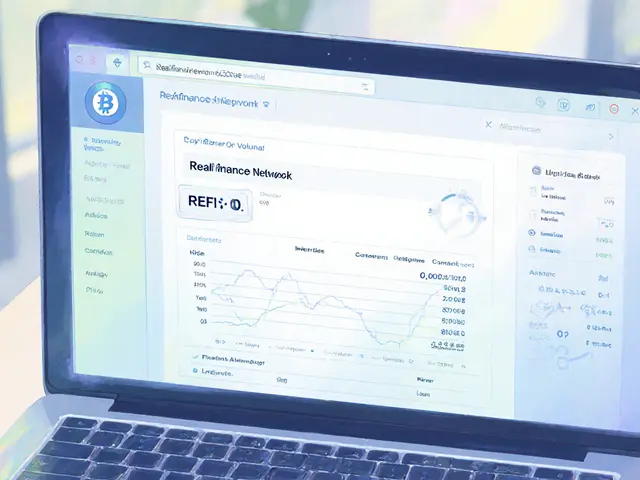Decentralized Finance: What It Is and Why It Matters
When working with Decentralized Finance, a blockchain‑based system that runs without banks or brokers. Also known as DeFi, it lets anyone lend, borrow, trade or earn directly from a digital wallet. Decentralized Finance encompasses everything from stablecoins to complex yield strategies, so understanding the building blocks helps you navigate the space with confidence.
One of those building blocks is stablecoin, a crypto token pegged to a real‑world asset like the US dollar. Stablecoins make everyday transactions predictable, which is why they drive cross‑border payments, power DeFi lending markets and even enable programmable money for enterprises. When you see a stablecoin in a liquidity pool, you’re witnessing Decentralized Finance’s promise of reliable value on an open network.
Another core piece is liquidity mining, the practice of providing assets to a pool in exchange for protocol tokens. Liquidity mining requires smart contracts that automatically match trades, and it rewards participants with extra tokens that can be sold or reinvested. This mechanism fuels the growth of new platforms, turning ordinary token holders into active market makers.
Closely related is yield farming, a strategy that moves assets across multiple pools to chase the highest returns. Yield farming influences passive crypto income by compounding rewards, but it also adds risk because you’re exposing capital to shifting rates and smart‑contract bugs. Knowing how yield farming differs from liquidity mining helps you pick the right approach for your risk tolerance.
Why These Concepts Matter Together
When you combine stablecoins, liquidity mining and yield farming, you get a toolkit that can support everything from cheap international remittances to high‑yield investment products. cross‑border payments, sending money across countries without traditional banks, become almost frictionless because stablecoins hold their value while DeFi protocols handle the routing. The same infrastructure also opens doors for financial inclusion, letting unbanked users earn yields that were once only available in traditional finance.
To make the most of this ecosystem you’ll need a few practical skills: reading smart‑contract audit reports, managing private keys securely, and understanding gas fees on the underlying blockchain. You’ll also want to keep an eye on market conditions, as token prices and reward rates can swing quickly. By mastering these fundamentals you can turn the theoretical promises of Decentralized Finance into real‑world results.
Below you’ll find a curated collection of articles that dive deeper into each of these topics. Whether you’re looking for real‑world stablecoin use cases, a step‑by‑step guide to start liquidity mining, or tips on balancing yield farming risk, the posts ahead break down the concepts into actionable insights you can apply today.

dApps offer full data control, zero downtime, global access, and lower fees by running on blockchain networks instead of central servers. They're already changing finance, social media, and digital ownership.
Jonathan Jennings Nov 2, 2025
Discover the real differences between liquidity mining and yield farming, learn their risks, rewards, and how to start earning passive crypto income with clear step‑by‑step guides.
Jonathan Jennings Aug 4, 2025
Explore how stablecoins are reshaping payments, DeFi, enterprise finance, and financial inclusion beyond trading, with real‑world examples, risks, and a comparison of top options.
Jonathan Jennings Jan 31, 2025




